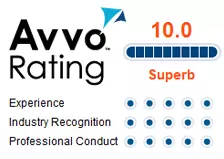If you have been arrested for drunk driving in Michigan then you probably submitted to one or more field sobriety tests. The problem with these tests is that they are not reliable indicators of intoxication and they are almost never administered properly by the police.
Because arrests for DUI in Michigan are almost always based on how you performed on these tests this means that it is entirely possibly that you were wrongfully arrested for drunk driving!
History of Standardized Field Sobriety Testing:
Field sobriety tests, or FSTs, are psychomotor tests that attempt to measure a person’s physical coordination and/or ability to perform more than one task at a time. These tasks are often referred to as “divided attention” tests.
Because alcohol can impair these functions, police use FSTs to assist them in determining whether a person’s cognitive and motor skills may be impaired by alcohol consumption.
The National Highway Traffic Safety Administration (NHTSA) has developed standardized procedures for the administration of the three FSTs which NHTSA considers the most reliable. These standardized FSTs (SFSTs) are taught to and used by police officers across the country and are administered in most drunk driving arrests.
The three standardized FSTs are: the horizontal gaze nystagmus test (HGN), the walk-and-turn test (WAT), and the one-leg stand test (OLS). There are also many other FSTs that have not been studied or standardized by NHTSA.
The SFSTs are designed to be used by police officers to establish probable cause to arrest individuals who are under suspicion of driving while intoxicated and to support the administration of a breathalyzer test which measures more directly a person’s blood alcohol content (BAC).
a. Horizontal Gaze Nystagmus Test
“Horizontal gaze nystagmus” (HGN) is the involuntary jerking of the eye that occurs naturally when the eyes move from side to side. NHTSA Manual at VIII-12. The onset of HGN can occur earlier in the field of vision as a result of alcohol or other central nervous system depressants or illnesses. In the HGN test, a police officer instructs the subject to follow a moving object (such as a penlight) with their eyes from left to right. If the subject’s eyes “jerk” prior to 45 degrees or “lack smooth pursuit,” meaning that they do not follow the object smoothly, the officer may infer that alcohol or some other cause is affecting the subject’s HGN. Due to the highly technical characteristics of HGN, officers require specialized training in its administration and interpretation. See NHTSA Manual at VIII-12-18.
b. Walk and Turn and One Leg Stand Tests
In addition to the HGN, the other two tests are the walk-and-turn test (WAT) and the one-leg-stand (OLS). NHTSA Manual at VIII-1-7.
The WAT and OLS require a subject to perform several unfamiliar physical tasks – walking heel to toe or standing with one leg elevated – while listening to instructions, counting, or otherwise performing divided attention tasks.
The administering officer is supposed to watch for certain predetermined technical “clues” such as missing a heel to toe touch, or lowering a leg before the count of thirty.
However, not every mistake is considered a clue and the officer is trained to count only those clues identified through testing and validation. If a person misses more than two “clues” on either test, the officer may consider that as “evidence” that the subject’s blood alcohol level (BAC) exceeds .10. NHTSA Manual at VIII-7-11.
Tests Only “Valid” if Administered Properly
The validity of the HGN, WAT and the OLS rests on the theory that alcohol impairs a person’s motor skills and their ability to perform divided attention tasks.
In its training manual, NHTSA emphasizes numerous times that the WAT and OLS must be performed only under certain conditions, i.e., on “a dry, hard, level, unslippery surface,” NHTSA Manual at VIII-21, and interpreted only based on the predetermined “clues” in order to retain the validity that NHTSA assigns to them. NHTSA Manual at VIII-8, 9, 10, 11, 12.
As NHTSA explains:
[I]t is also necessary to emphasize one final and major point.
THIS VALIDATION APPLIES ONLY WHEN THE TESTS ARE ADMINISTERED IN THE PRESCRIBED, STANDARDIZED MANNER; AND ONLY WHEN THE STANDARDIZED CLUES ARE USED TO ASSESS THE SUSPECT’S PERFORMANCE; AND ONLY WHEN THE STANDARDIZED CRITERIA ARE EMPLOYED TO INTERPRET THAT PERFORMANCE.
IF ANY ONE OF THE STANDARDIZED FIELD SOBRIETY TEST ELEMENTS IS CHANGED, THE VALIDITY IS COMPROMISED.
[NHTSA Manual at VIII-12 (all capitalization and emphases in original)].
Dr. Marcella Burns Agrees Tests Must be Administered Properly
Dr. Burns was paid by NHTSA to develop the SFSTs. Bruce Kapsack is one of the nation’s top DUI lawyes. He deposed her several years ago. You can read her comments for yourself in her deposition transcript which Mr. Kapsack has made available for download.
The Tests are Almost Never Administered Properly
It would seem that after receiving this specialized training officers promptly forget what they learned and nearly always wrongly administer these tests.
In fact, according to a paper written by Dr. Lance Platt and published in the DWI Journal, the cops get it right only 3 percent of the time. This means that the tests are administered wrong 97 percent of the time!
Specifically, Dr. Platt indicates:
SFST’s as a Three Test Battery. Out of a total of three hundred sixty (360) evaluations that were administered (three test battery); the officers followed all of the NHTSA standardized procedures in only ten (10) evaluations. This represents 3% of all tests that were correctly administered as a battery of three tests. The officers using the HGN, WAT, and OLS tests as part of a three test battery for measuring sobriety were incorrect in their administration of one or more tests 97% of the time.
Other Scientists Agree with Dr. Platt
According to J.L. Booker, in his Science and Justice Journal article published in 2001 the HGN test was administered wrong over 98% time. Like Dr. Platt, Dr. Booker reached this conclusion after studying videotapes of actual traffic stops.
One peer-reviewed science journal calls the HGN “fraudulent science.” This article describes in detail the carelessness in the HGN research through self-serving puffery and finally into deliberate fraud – always at the expense of the citizen accused. See JL Booker, The Horizontal Gaze Nystagmus Test: Fraudulent Science in the American Courts. Journal of Science and Justice, Vol. 44 pages 133-139 (18 June 2002).
If you were arrested for drunk driving, and think you may be the victim of fraudulent science, contact the Barone Defense Firm today for your FREE consultation.









